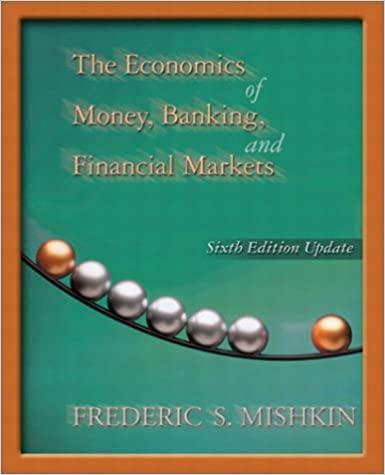Question
) Gs balance sheets and income statement follow: 12-31-2015 12-31-2016 Cash $768,000 $807,000 Receivables from customers, net 950,000 278,000 Investments 211,000 231,000 Patents 400,000 520,000
) Gs balance sheets and income statement follow:
12-31-2015 12-31-2016
Cash $768,000 $807,000
Receivables from customers, net 950,000 278,000
Investments 211,000 231,000
Patents 400,000 520,000
Plant assets 2,795,000 3,884,000
Accumulated depreciation (1,124,000) (1,220,000)
Total $4,000,000 $4,500,000
Short-term debt 250,000 42,000
Accrued liabilities 614,656 4,424
Capital lease obligations 175,344 615,231
Asset retirement obligation 0 43,345
Defined benefit pension plan obligation 600,000 624,000
Common stock ($1 par value) 50,000 56,100
Additional paid-in-capital, common stock 525,000 635,900
Other comprehensive income Prior Service Cost (15,000) (12,000)
Retained earnings 1,800,000 2,491,000
total $4,000,000 $4,500,000
Sales $3,500,000
Operating expenses 1,850,000
Pension-related expense 89,000
Other gains/losses, net 45,000
Interest expense 3,000
Income before taxes 1,603,000
Income tax expense 560,000
Net income $1,043,000
Additional information for G follows:
G is a publicly-traded company.
Gs investment account consists of the 25% interest G has in Acme Companys common stock. G bought the 25% interest during 2014. During 2016, Acme reported $100,000 of net income.
During 2016, used $200,000 to purchase a patent from another company.
On 01-01-16, G issued 1,000 shares of its common stock in exchange for a patent. At the time of the stock issuance, one share of G stock traded for $15.
Gs plant assets account includes capitalized leased assets. As of 12-31-16, G had the following 2 leases.
On January 1, 2016, G leased a machine with a useful life of 10 years. The lease required G to make 10 annual lease payments of $60,000 starting January 1, 2016. After making the last payment, G will retain the machine. Gs borrowing rate on January 1, 2016 was 4%. G treated this lease as a long-term finance lease.
On December 31, 2010, G leased a machine with a useful life of 25 years. The lease required G to make 24 annual lease payments of $15,000 starting December 31, 2010. After making the last payment, G will retain the machine. Gs borrowing rate on December 31, 2010 was 5%. G treated this lease as a long-term finance lease
. On 09-30-16, G sold a plant asset for $150,000. G had acquired the plant asset on 01-01-10 for $400,000. On this particular asset, G estimated a 10-year useful life and no salvage value.
On 01-01-16, G acquired a piece of equipment that G estimates it will use for twelve years. When G retires the asset on 01-01-28, it estimates it will spend $60,000 to dismantle and properly dispose of the equipment. In calculating its asset retirement obligation, G used a 3% interest rate. This equipment is the only plant asset in which G has a legal obligation to dismantle.
During 2016, G made a cash contribution to its defined-benefit pension plan.
During 2016, G declared and paid cash dividends.
On 06-30-16, G declared and distributed a 10% stock dividend. At the time G declared the stock dividend, one share of G stock traded at $20.
On Gs income statement, the operating expenses caption includes, but is not limited to, depreciation AND patent amortization AND ARO accretion expense AND capitalized lease expense.
On Gs income statement, the interest expense caption is for interest expense on Gs short-term debt.
On Gs income statement, the other, net caption, consists of gains and/or losses on fixed asset sales AND investment-related income
. G depreciates its plant assets using a straight-line method and records depreciation expense to the nearest full month.
G records adjusting journal entries only once a year as of year-end.
G uses the indirect method
Prepare a statement of cash flows for G the year ended 12-31-16.Be sure to label your section answers as provided by OR used in.
Please show how you got your calculations, and why, and the statement of cash flows.
Step by Step Solution
There are 3 Steps involved in it
Step: 1

Get Instant Access to Expert-Tailored Solutions
See step-by-step solutions with expert insights and AI powered tools for academic success
Step: 2

Step: 3

Ace Your Homework with AI
Get the answers you need in no time with our AI-driven, step-by-step assistance
Get Started


